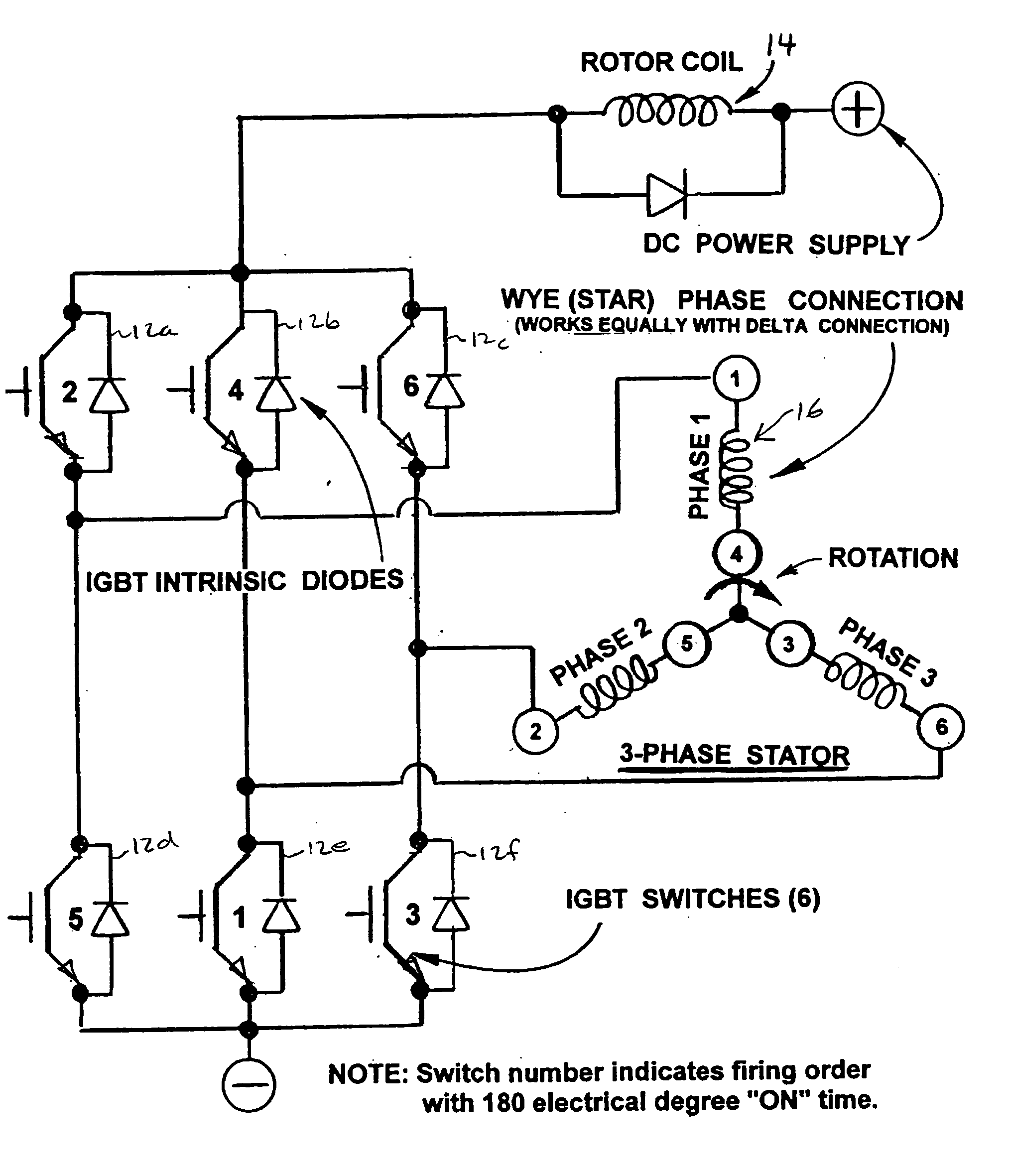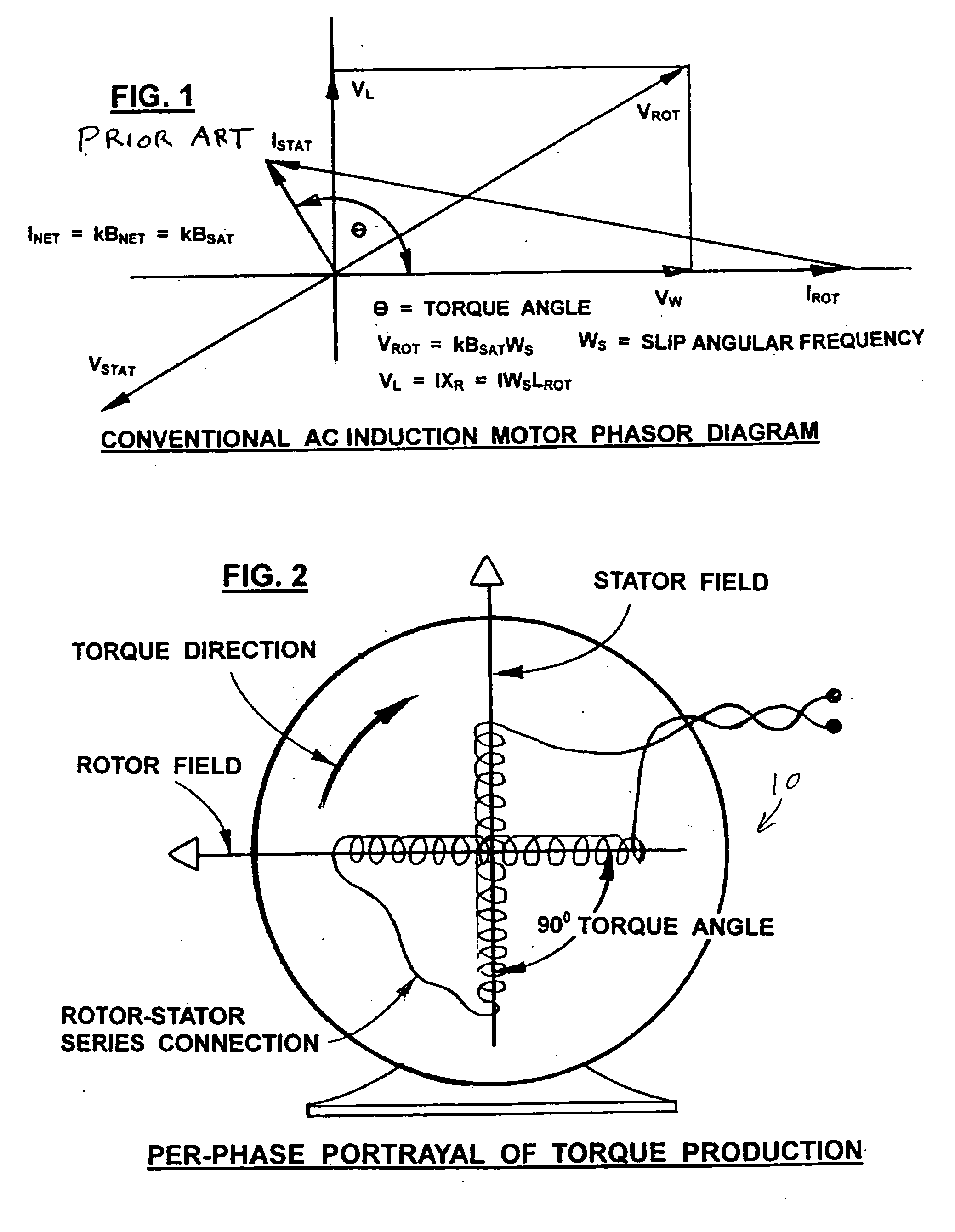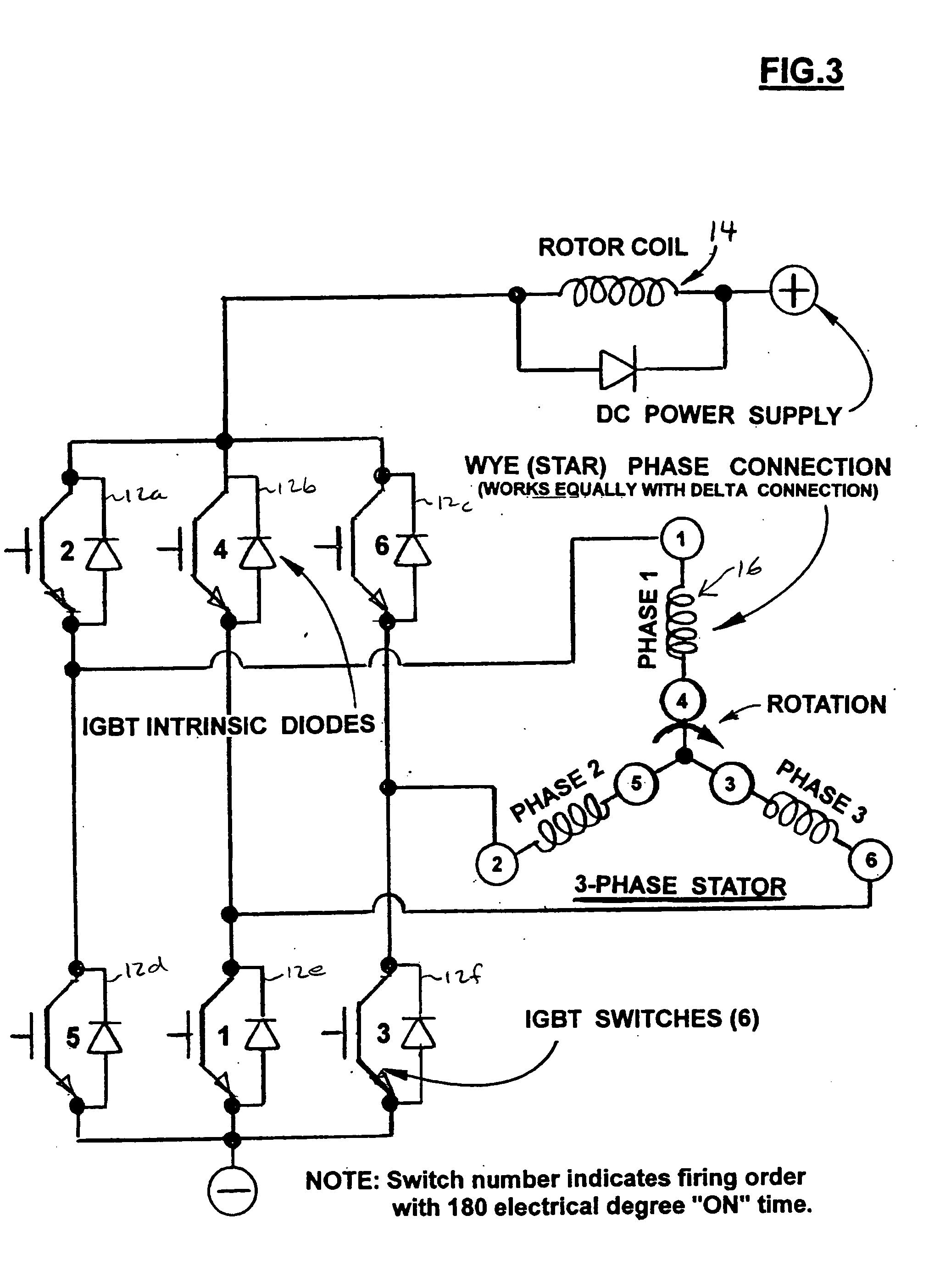Electromagnetic motor
a technology of electric motor and motor body, applied in the direction of motor/generator/converter stopper, dynamo-electric gear control, motor/generator/converter stopper, etc., can solve the problems of difficult bulk handling and impracticality of brushless dc motor fabrication, and achieve the effect of producing more torqu
- Summary
- Abstract
- Description
- Claims
- Application Information
AI Technical Summary
Benefits of technology
Problems solved by technology
Method used
Image
Examples
Embodiment Construction
Motor Operation
Electromagnetic Symmetry:
Referring to FIG. 2, the rotor and stator in the motor 10 of the present invention are not linked solely magnetically as in the transformer model of the AC induction motor. Instead, the wound rotor coil and stator coil are connected electrically in series which assures precise coordination of their magnetic fields relative to one another at a 90° torque angle.
The motor 10 incorporates a rotor and stator that are electromagnetically identical. Each has the same amp-turns and magnetic circuit reluctance Connected in series, they both produce fields of equal magnitude at controlled angular alignment so that peak magnetic fields are synchronized at an orientation of 90°. Optimum torque angle of 90° is thereby maintained under all operating conditions of speed and torque. With the same amp-turns and same magnetic field, it is impossible to distinguish rotor from stator except that one rotates and the other is stationary.
Enlarged Air Gap:
...
PUM
 Login to View More
Login to View More Abstract
Description
Claims
Application Information
 Login to View More
Login to View More - R&D
- Intellectual Property
- Life Sciences
- Materials
- Tech Scout
- Unparalleled Data Quality
- Higher Quality Content
- 60% Fewer Hallucinations
Browse by: Latest US Patents, China's latest patents, Technical Efficacy Thesaurus, Application Domain, Technology Topic, Popular Technical Reports.
© 2025 PatSnap. All rights reserved.Legal|Privacy policy|Modern Slavery Act Transparency Statement|Sitemap|About US| Contact US: help@patsnap.com



